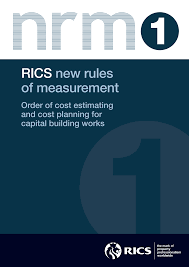Incorporating Asset Data in BIM: COBie, Uniclass, and NRM for Improved Project Outcomes
Introduction
Building Information Modelling (BIM) has revolutionized the construction industry by streamlining processes and fostering better collaboration among project stakeholders. One crucial aspect of BIM is managing asset data, which is essential for effective facility management and decision-making. In this follow-up blog post, we will discuss how to incorporate asset data using COBie (Construction Operations Building Information Exchange), Uniclass, and NRM (New Rules of Measurement) in the BIM process to enhance project outcomes and facilitate efficient facility management.

- COBie: Streamlining Handover and Facility Management
COBie is a data format that standardises the exchange of building asset information during the handover process. COBie ensures that all relevant data, such as equipment details, warranties, and maintenance schedules, are easily accessible and consistent, allowing for more effective facility management.
Incorporating COBie into the BIM process involves:
- Establishing COBie requirements during the project planning stage, including which assets need to be captured and the level of detail required.
- Ensuring that asset data is collected and input into the BIM model consistently throughout the design, construction, and commissioning stages.
- Delivering the COBie data set as part of the handover documentation, facilitating a smoother transition to the operations and maintenance phase.
- Uniclass: A Unified Classification System
Uniclass is a comprehensive classification system for the construction industry, which enables the consistent organisation and categorisation of project information. By integrating Uniclass into the BIM process, project teams can ensure that all elements and assets are consistently labelled and easily searchable.
To incorporate Uniclass in the BIM process:
- Adopt Uniclass codes and nomenclature across the project, ensuring that all parties use the same classification system.
- Apply Uniclass codes to BIM objects, enabling more effective search and retrieval of data.
- Use Uniclass as a basis for cost estimation, scheduling, and procurement, promoting consistency and clarity throughout the project lifecycle.
- NRM: Enhancing Cost Management
The New Rules of Measurement (NRM) is a suite of guidance documents that provide a standardised approach to cost management in construction projects. NRM can be integrated with BIM to improve cost estimation, planning, and control.
Incorporating NRM into the BIM process includes:
- Aligning cost information with the BIM model, ensuring that all costs are associated with the relevant building elements and systems.
- Utilizing NRM guidance for cost estimation and cost planning, providing a consistent and transparent approach to cost management.
- Applying NRM principles to monitor and control costs during the construction phase, enabling more effective budget management and risk mitigation.


Conclusion
Incorporating asset data using COBie, Uniclass, and NRM in the BIM process greatly enhances the value of BIM throughout a project's lifecycle. By ensuring that asset information is consistent, well-organized, and readily accessible, project teams can improve handover efficiency, facilitate effective facility management, and enhance cost management. By integrating these standards and methodologies into the BIM process, stakeholders can achieve better project outcomes and long-term value for their built assets.
.jpg)